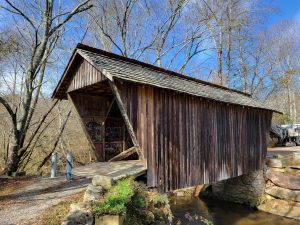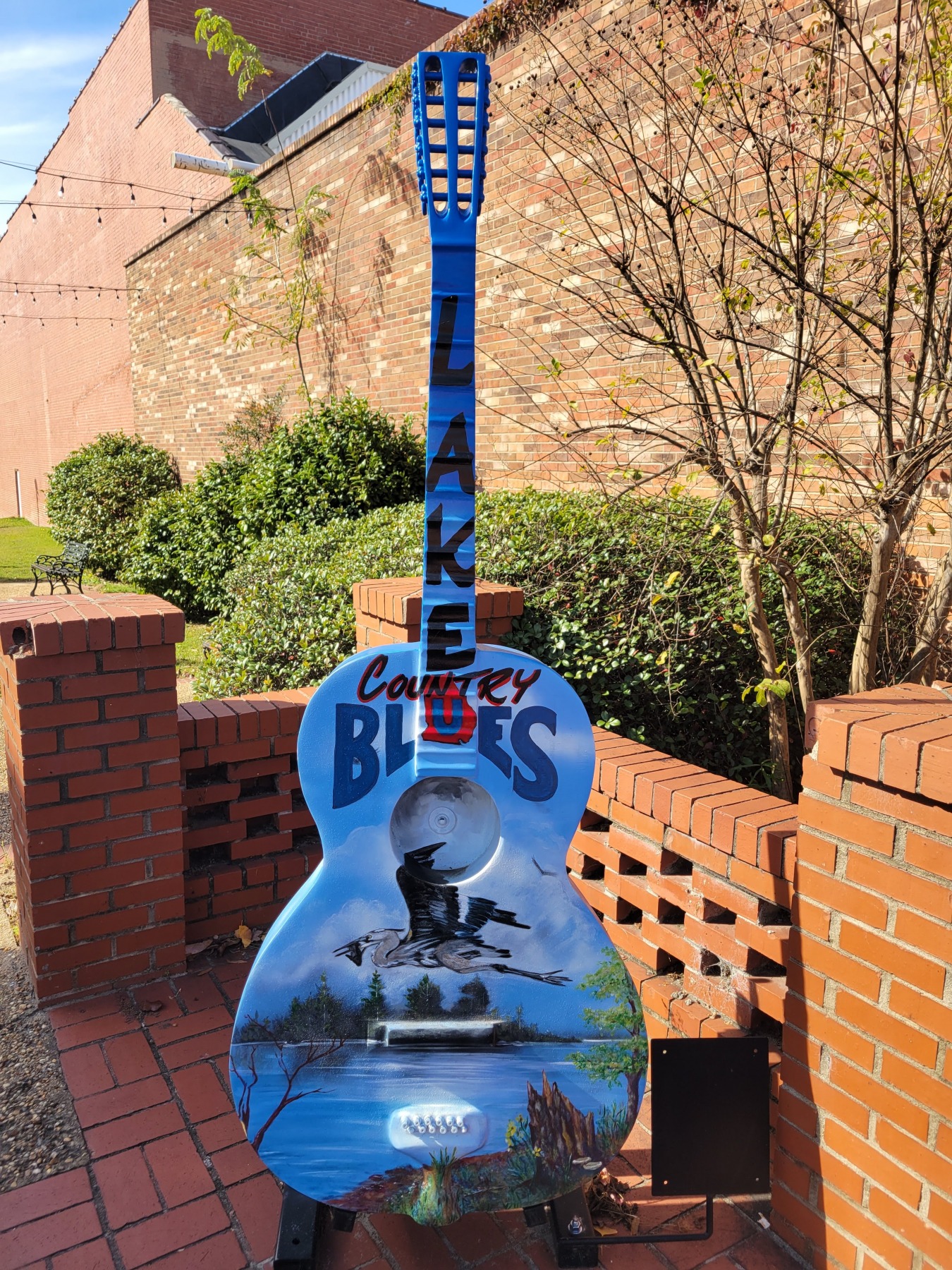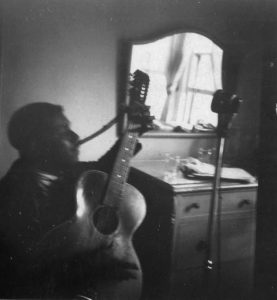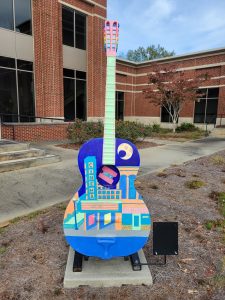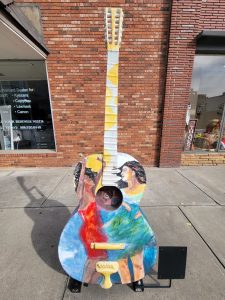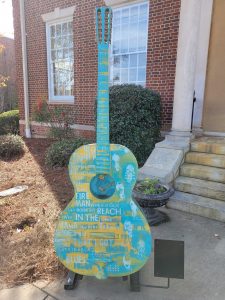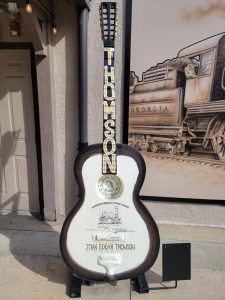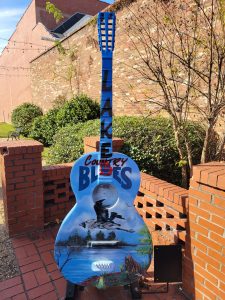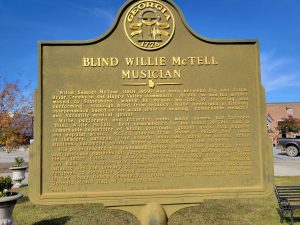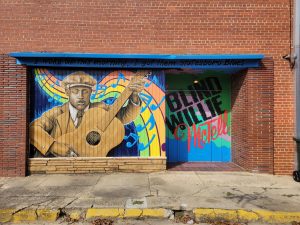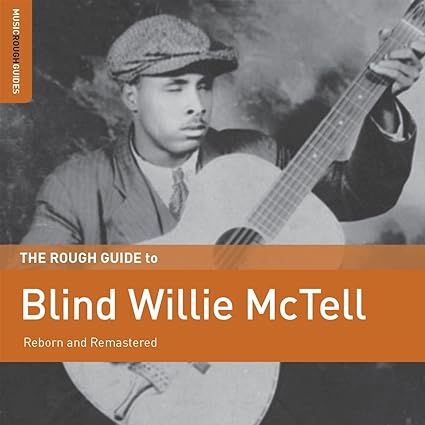Stovall Mill Covered Bridge Sautee Nacoochee, GA
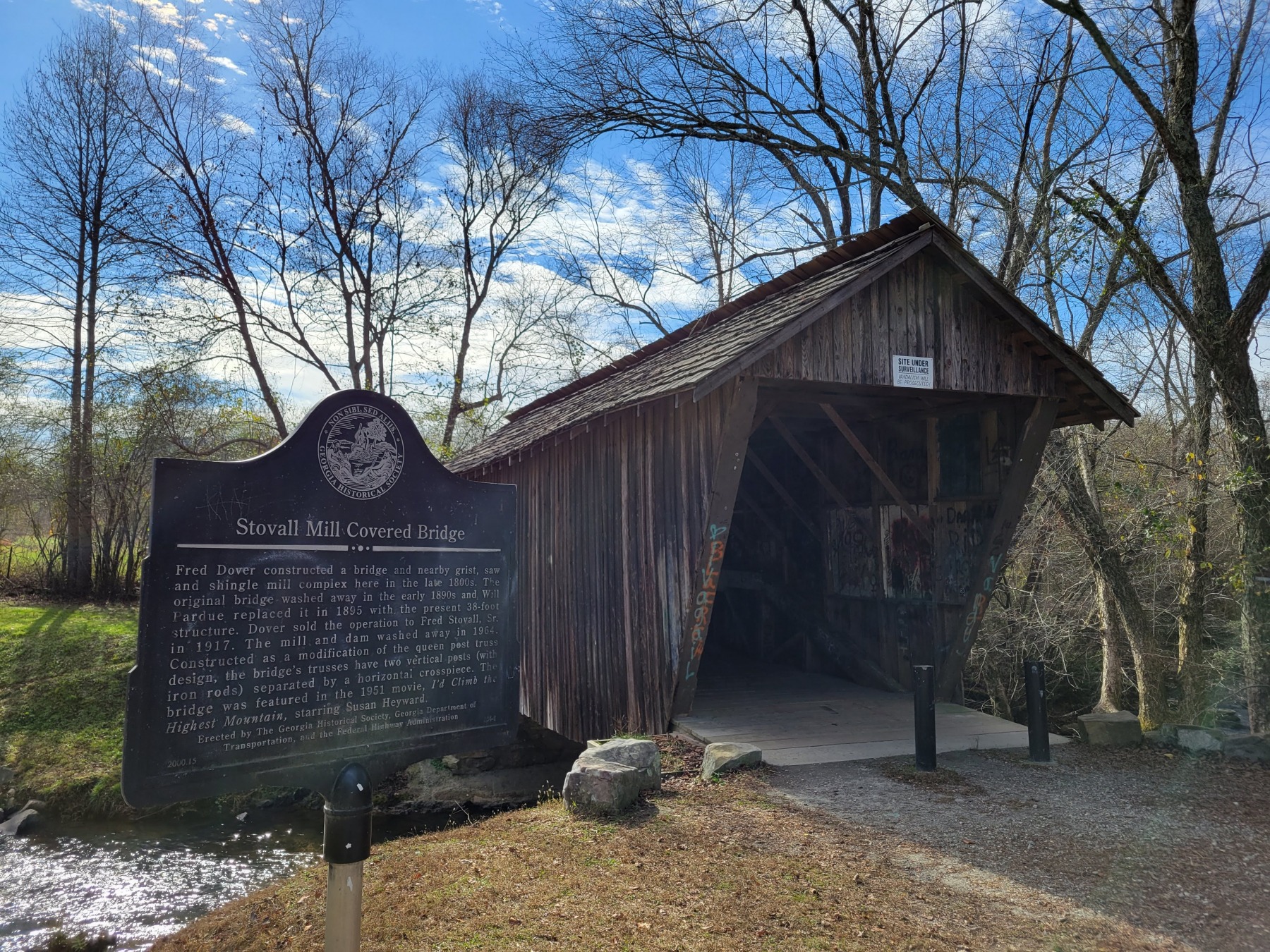
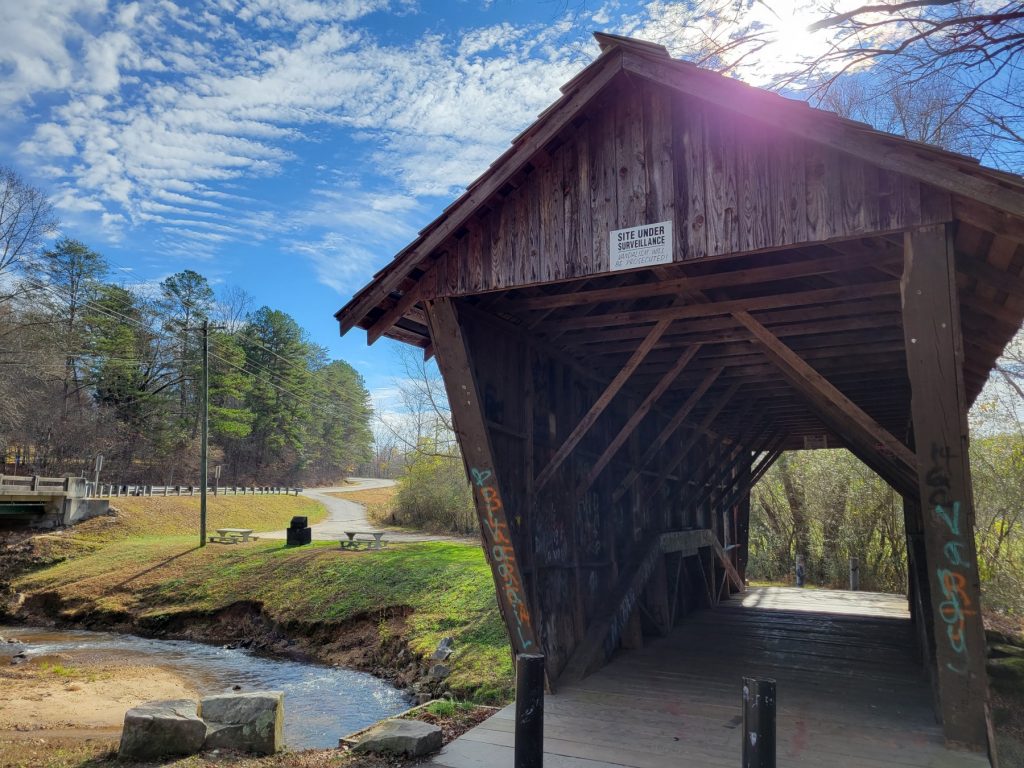
Located off of Georgia Highway 255 in Sautee Nacoochee, GA is the 38-foot-long Stovall Mill Covered Bridge. The graffiti covered bridge dates to before the turn of the 20th century. As would be expected, parking is free and there is no admission charge to view or walk across the bridge. Picnic tables are on site so you can enjoy the views and sounds of Chickamauga Creek.
Do you remember the family road trip? Dad, mom, the kids, and luggage all piled in the family truckster headed down the interstate on vacation. Dad wanting to “make time.” Remember stopping at Stuckey’s on the way? Now, straight from Wrens, Georgia, relive those times with a pecan log roll just like you remember. Click the photo or THIS LINK to place your order and to see other delicious candies you have forgotten about.
Text for the Georgia Historic Marker reads:
Stovall Mill Covered Bridge
Fred Dover constructed a bridge and nearby grist, saw and shingle mill complex here in the late 1800s. The original bridge washed away in the early 1890s and Will Pardue replaced it in 1895 with the present 38-foot structure. Dover sold the operation to Fred Stovall, Sr. in 1917. The mill and dam washed away in 1964. Constructed as a modification of the queen post truss design, the bridge’s trusses have two vertical posts (with iron rods) separated by a horizontal crosspiece. The bridge was featured in the movie I’d Climb the Highest Mountain starring Susan Hayward.
Erected by the Georgia Historical Society, Georgia Department of Transportation and the Federal Highway Administration.
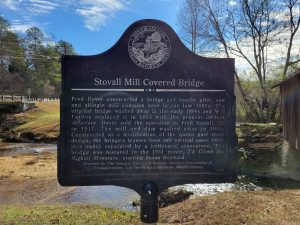
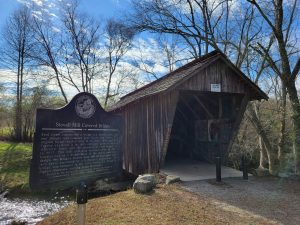
This post may contain affiliate links. If you click these links and make a purchase, I may receive a small commission. This commission does not affect any price that you pay. Affiliate programs or sponsors providing products do not influence the views and opinions provided in this blog.
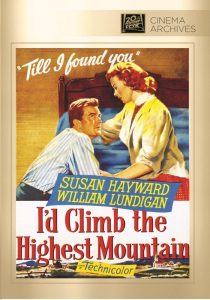
 I’d Climb the Highest Mountain, starring Susan Hayward and William Lundigan is available on DVD. This simple story directed by Henry King, follows a Methodist minister called to a rural Georgia mountain community. There he and his city-bred wife use their love to help a small town find God. The film has limited reviews on Rotten Tomatoes.
I’d Climb the Highest Mountain, starring Susan Hayward and William Lundigan is available on DVD. This simple story directed by Henry King, follows a Methodist minister called to a rural Georgia mountain community. There he and his city-bred wife use their love to help a small town find God. The film has limited reviews on Rotten Tomatoes.


